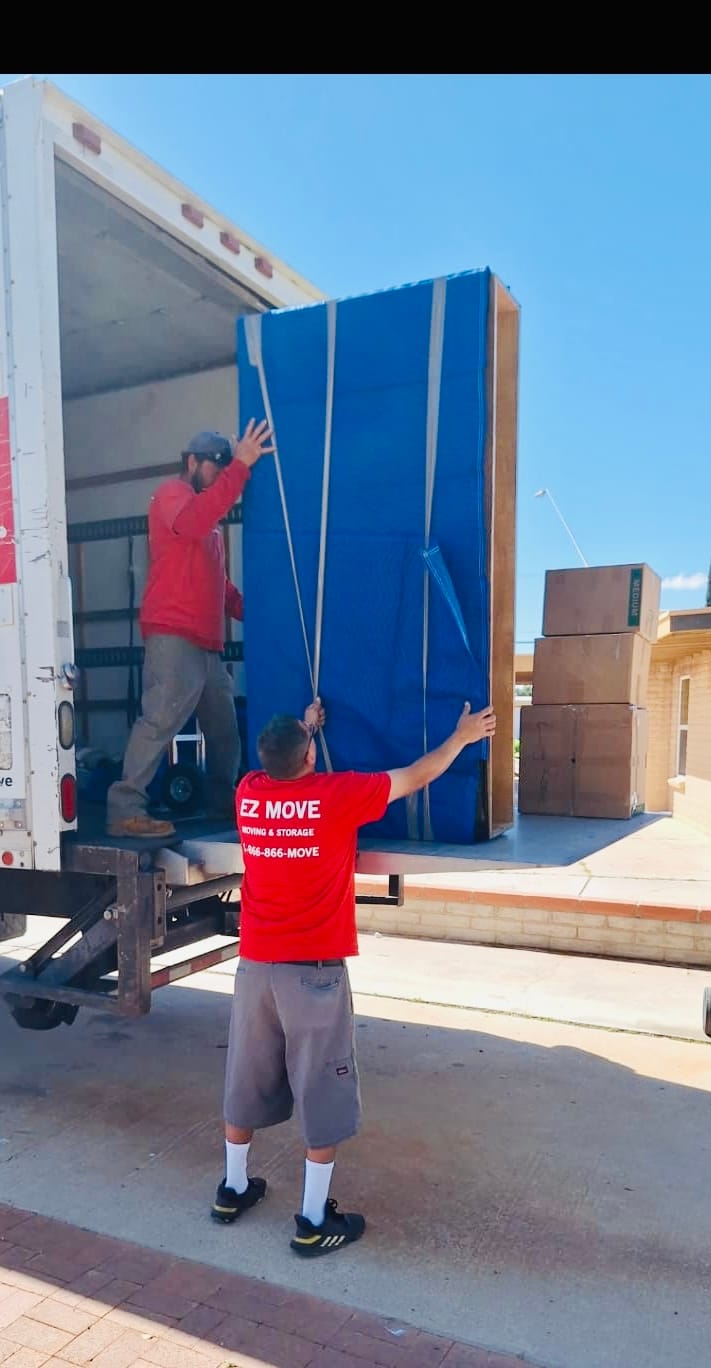When you’re preparing for a move, packing your valuable china, handling your delicate antiques, or storing your fragile keepsakes, the process can be fraught with anxiety. You don’t want to end up with broken treasures, do you? Ensuring their safety often hinges on how well you pack these items. In our upcoming sections, we’ll explore the essentials of packing delicate belongings, from the right materials to the most effective techniques. Stay tuned if you’d like to learn how to safeguard your precious items against the perils of relocation.
Understanding the Importance of Proper Packing
When it comes to safeguarding your valuable items, understanding the importance of proper packing isn’t just a bonus, it’s a necessity. This is where the concept of ‘Packing Psychology’ comes into play. It’s not merely about stuffing items into boxes, but rather it involves a strategic approach to ensure the protection and preservation of your belongings.
Think of packing as a game of Tetris, where every item has a specific place. You’ve got to consider the size, weight, and fragility of each item. You’ll need to contemplate the best position for each object to minimize damage. It’s a process that requires careful thought, planning, and execution. This is the essence of Packing Psychology.
But there’s more to packing than just protection. In today’s world, where sustainability is a growing concern, your packing methods should also reflect this. Sustainability Considerations mean thinking about the environmental impact of your packing materials and methods. Are you using materials that are biodegradable or recyclable? Are you reusing boxes and packing materials? By considering these factors, you’re not just ensuring the safety of your items, but also contributing to the preservation of our environment.
Essential Materials for Packing Fragile Items
So, what are the essential materials you’ll need when packing fragile items? Let’s dive in and explore.
Bubble Wrap. The quintessential packing material. Its air-filled bubbles provide excellent shock absorption, making it ideal for wrapping fragile items. Material durability analysis shows that bubble wrap can withstand substantial pressure, ensuring your delicate belongings stay intact.
Sturdy Moving Boxes. They serve as the first line of defense against external impacts. Pick double-walled boxes for added strength. Remember, the durability of the packing material directly affects the safety of your belongings.
Packing Peanuts. Another essential, fill up the voids in the boxes, preventing movement and possible damage. They’re lightweight and cost-effective, making them a popular choice.
Foam sheets and padding are great for providing an extra layer of protection. They’re particularly useful for wrapping items with sharp edges or irregular shapes.
Packing tape and markers. Tape secures the wrapping materials and seals the boxes, while markers help you label the boxes, aiding in organized unpacking.
Now, let’s talk about the cost-effectiveness of packing materials. Bubble wrap, while slightly more expensive, offers superior protection. Boxes and packing peanuts are typically inexpensive. Foam padding may seem pricey, but it’s reusable and offers excellent protection, giving it a high cost-effectiveness ratio.
In essence, when packing fragile items, you must consider both the material’s durability and cost-effectiveness. Strike a balance between the two, and you’ll ensure your delicate items reach their destination in one piece.
Techniques for Wrapping Delicate Items
Having gathered your essential packing materials, let’s now move on to the key techniques for wrapping your delicate items. These methods not only secure your belongings but also employ damage prevention strategies to ensure their safe arrival at the destination.
It’s crucial to wrap each item individually. This reduces the risk of items causing damage to each other during transit. Use soft material like tissue paper or cloth to wrap the item initially. This provides a layer of protection against scratches or minor bumps.
Now, you might be thinking about bubble wrap. It’s a popular choice, but there are effective bubble wrap alternatives too. Consider using items like old newspapers, towels, or even foam peanuts. They can provide ample cushioning and shock absorption just like bubble wrap, but at a lower cost and with a more eco-friendly approach.
Secure the wrapping with packing tape. Be careful not to stick the tape directly on the item, as removal might cause damage. If your item is particularly fragile, consider double-wrapping it. This gives an extra layer of protection against any unforeseen shocks during the move.
Remember to mark your items as ‘fragile’. This will inform anyone handling your belongings about the care they need to take. You can use stickers or simply write on the wrapping with a bold marker.
Best Practices for Boxing Fragile Belongings
When it comes to boxing your fragile belongings, selecting the appropriate packing materials is crucial. You’ll need to ensure that the items are effectively secured to prevent shifting during transport. We’ll discuss how to choose the right materials and techniques for optimal protection.
Selecting Appropriate Packing Materials
Choosing the right packing materials can make or break the safety of your fragile items during transit. Prioritize recycling packing materials like bubble wrap, newspaper, or old clothes. Not only are these options cost-effective, but they also provide ample cushioning to protect your belongings. Sustainable packaging options, such as biodegradable peanuts or corrugated bubble wrap, are also great choices. They’re not just eco-friendly, but also very effective in absorbing shocks and preventing damage. Don’t skimp on quality packing tape either. It’s crucial for keeping your boxes sealed and secure. Lastly, consider the size and shape of your items when selecting boxes. A snug fit reduces movement and increases the safety of your items.
Securing Items Effectively
So, how do you ensure your fragile items are safe and secure inside the box? The key is in your padding selection. Opt for high-quality materials like bubble wrap, packing peanuts, or foam sheets. These provide a cushion, preventing movement and reducing the risk of damage during transit. Wrap each item separately, making sure all sides are protected.
Place the wrapped items in the box, ensuring there’s no space. This is crucial for damage prevention. Fill any gaps with extra padding. Remember, movement equals potential damage.
Seal the box securely using packing tape. A well-packed box is your first line of defense in keeping your fragile belongings safe. Your items are now ready for transportation, secured effectively against potential bumps and drops.
Special Considerations for Unique or Irregular Items
In packing unique or irregular items, you’ll need to take some special considerations into account to ensure their safety during transit. The usage of specialty containers may be required for items that don’t fit in standard boxes. These containers come in various shapes and sizes, designed to accommodate everything from your cherished grandfather clock to a delicate piece of art. They’re typically sturdier than regular boxes and often padded for extra protection.
Irregular object positioning is another key aspect to consider. You might have items that are not only fragile but also awkwardly shaped, making them harder to secure. For instance, a large mirror doesn’t fit neatly into a box like books or pots. In such cases, you’ll need to be creative and strategic in your packing. Wrap the item with bubble wrap or packing paper, then place it in the container so it’s snug and won’t move around during transit. For extremely irregular items, consider using an adjustable box that you can tailor to the item’s size.
Don’t forget about the weight distribution. If you’re packing a box with various items, place the heaviest ones at the bottom and the lighter ones on top. This tactic prevents damage caused by weight pressing down on fragile items.
Remember that packing materials are your friends. Foam peanuts, bubble wrap, and packing paper provide cushioning and reduce the risk of damage. They fill empty spaces in the box, preventing movement that could lead to breakage.
Packing unique or irregular items might challenge you, but with careful planning and the right materials, you can ensure their safe arrival.
Tips to Protect Fragile Items During Transit
Safeguarding your delicate possessions during transit requires a thoughtful approach and meticulous handling. Your first line of defense is damage prevention. To achieve this, you’ll need to think about how your items will be handled and moved. Picture them jostling around in the back of a truck, and pack accordingly. Use sturdy, high-quality packing materials like bubble wrap, packing paper, and foam peanuts. Don’t skimp on these materials; when it comes to protecting your fragile items, it’s better to be safe than sorry.
Avoid overpacking boxes, as this can lead to breakage. Instead, try to pack items snugly, filling any extra space with packing material. Label all boxes containing fragile items clearly. This lets movers know to handle these boxes with extra care.
But what if, despite your best efforts, something does get broken? That’s where transit insurance comes in. This type of insurance can provide monetary compensation for items damaged during transit. While it can’t bring back a broken family heirloom, it can help soften the financial blow of replacing other items.
Before purchasing transit insurance, be sure to read the fine print. Not all policies are created equal, and it’s important to know exactly what’s covered. Remember, insurance should be seen as a last resort, not a replacement for careful packing.
Handling and Unpacking Delicate Items Safely
Now that you’ve successfully packed and moved your fragile items, it’s time to focus on unpacking them with care. You’ll need to know the proper techniques to prevent damage during this crucial process, especially when it comes to handling antiques. Let’s explore these steps together to ensure your valuable belongings stay intact.
Proper Unpacking Techniques
When it comes to handling and unpacking your delicate possessions, it’s crucial to employ proper techniques to ensure their safe arrival in your new home. Start with an unpacking order strategy, opening boxes containing less fragile items first. This will create more space and reduce the chance of accidentally damaging your delicate belongings. Also, consider the emotional value of your items. If a piece has sentimental worth, you may want to unpack it privately to savor the moment or protect it from possible mishandling by others. Lastly, be patient during the process. Rushing can lead to mistakes that could damage your valued items. In short, proper unpacking techniques are vital for the safety of your fragile belongings.
Avoiding Damage During Unpacking
To avoid damage during unpacking, it’s crucial to handle and unpack your delicate items with great care and attention to detail. Start by establishing your unpacking order. Prioritize items based on their fragility and need. Begin with the toughest items and gradually move towards the most fragile ones. This minimizes the risk of accidental damage from clutter.
Perform a damage assessment. As you unpack, continuously check items for any breakages or damages that might have occurred during transport. If you find any, document them right away for insurance purposes. Handle each item gently, especially when removing packing materials. Using sharp tools carelessly can cause inadvertent damage. Remember, proper handling is paramount to preserving the condition of your delicate belongings.
Careful Handling of Antiques
Handling antiques, especially during unpacking, requires an extra level of care and precision, as these items are not only fragile but often irreplaceable. Don’t rush. Take your time to carefully remove the packaging materials, mindful of sharp objects that could scratch or damage the item.
It’s crucial to understand the antique’s valuation before handling it. This knowledge will guide you in deciding if gloves are necessary, or if a particular restoration method is needed. If the antique is heavily tarnished, do not attempt to clean it yourself. Incorrect restoration methods can drastically depreciate an antique’s value. Instead, consult an expert for advice. Your antiques are your treasures. Handle them with the care they deserve.



